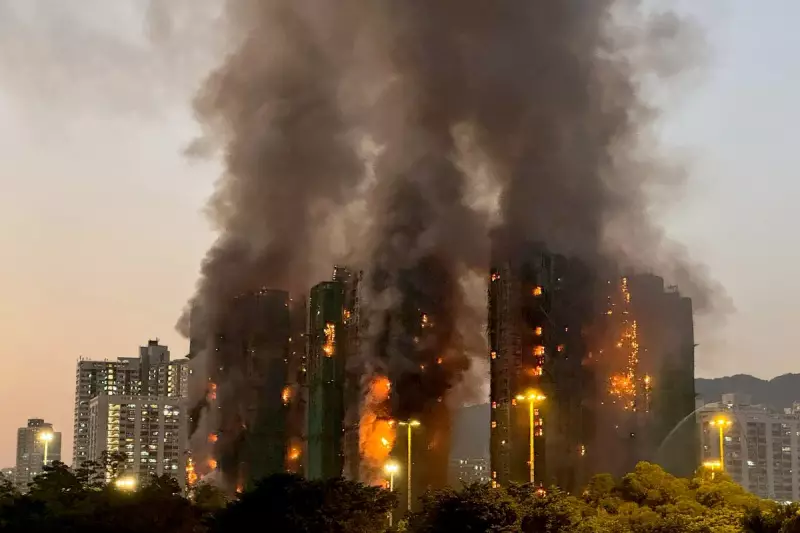
Hong Kong authorities had issued repeated warnings about fire safety risks at a high-rise complex just one week before it became the scene of the city's deadliest blaze in decades, resulting in at least 94 fatalities.
The Devastating Inferno
The catastrophic fire erupted at Wang Fuk Court in Tai Po on Wednesday, tearing through seven of the eight towers in the residential complex. By Friday morning, the confirmed death toll had risen to 94, with nearly 280 people still unaccounted for in what has become Hong Kong's most lethal fire since 1948.
Firefighters battled extreme heat and collapsing scaffolding in a desperate search for survivors throughout Thursday and into Friday. Although the blaze was largely contained by Thursday evening, one apartment reignited in the early hours of Friday, demonstrating the persistent danger.
Deputy fire services director Derek Chan told reporters: "We will endeavour to effect forcible entry to all the units of the seven buildings, so as to ensure there are no other possible casualties."
Warnings Ignored Before Tragedy
The Hong Kong Labour Department had conducted 16 inspections at Wang Fuk Court since renovation work began in July last year, with the most recent inspection occurring on 20 November. Less than a week before the inferno, department officials had specifically notified the contractor about the urgent need to implement proper fire safety measures.
Authorities revealed they had received complaints about "issues relating to the scaffolding" as early as September 2024. The fire initially started on the external scaffolding of a 32-storey tower, rapidly consuming bamboo scaffolding and construction netting before penetrating the building interior and spreading to adjacent high-rises.
Arrests and Safety Failures
In response to the disaster, police arrested two directors and an engineering consultant from Prestige Construction, the company contracted for building maintenance, on suspicion of manslaughter. Authorities accused the firm of "grossly negligent" practices, including using unsafe building materials.
Investigators conducted raids on the company's office, seizing bidding documents, employee lists, 14 computers and three mobile phones as part of their investigation.
The tragedy has sparked intense scrutiny of several safety failures:
- Residents reported not hearing fire alarms during the emergency
- Foam boards described as "highly flammable" were found covering windows
- Questions emerged about why contractors hadn't notified fire services about non-functioning safety systems
Veteran engineer Ho Wing Ip questioned: "If the system was not working, did they give the fire services a heads-up that renovation on the system was underway? So that the department could make special arrangements in case of an emergency."
Heroic Sacrifices and Aftermath
Among the victims was 37-year-old firefighter Ho Wai Ho, who died while rescuing residents from one of the burning buildings. The nine-year veteran of the fire services department collapsed at the scene and was pronounced dead at Prince of Wales Hospital at 4.41pm local time.
Authorities and colleagues paid tribute to his "gallantry and selfless devotion to duty." The victims also included two Indonesian domestic workers, highlighting the impact on Hong Kong's community of approximately 368,000 domestic workers, predominantly women from low-income Asian countries.
Hong Kong leader John Lee announced the establishment of a HK$300 million (£29 million) fund to assist affected residents, while several major Chinese companies pledged donations to support recovery efforts.
The disaster has drawn comparisons to London's Grenfell Tower tragedy in 2017, raising urgent questions about building safety standards and regulatory enforcement in high-density urban environments.





